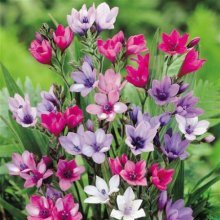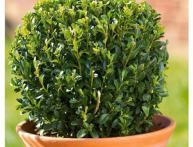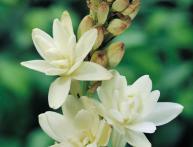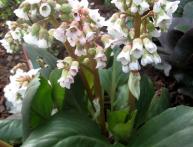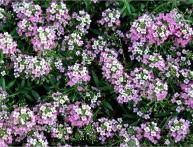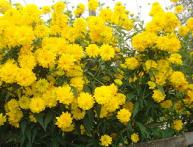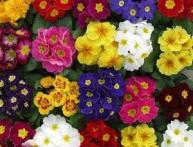Babiana - what is it?

If you ask avid lovers of indoor flowers what is the best indoor flower to decorate the interior of your home, most of them will answer “this Babiana flower.” For most people far from gardening, this word is unfamiliar. And not everyone likes to hear its name. But if you see this truly beautiful flower with its brightness and color, you won’t be able to tear yourself away from it right away.
Content:
Description of the plant
Babiana takes its roots from South Africa. It owes its name to monkeys - baboons, who with great pleasure use its roots as their delicacy. But over many years it has become so entrenched among us that it can be found in almost every gardener who is sensitive to his brainchild.
This is a tuber-bulb plant with elongated leaves drooping down and bright flowers that shimmer in the sun. But besides your beauty and variety of colors, the Babiana flower is also famous for the fact that it does not require special care.
The plant can reach a height of up to 25 centimeters. Stems can be either simple or branched. With its leaves, located five on each stem, Babiana partially resembles gladiolus. The same elastic and dotted with whitish fibers. The flowers, as already mentioned, have a variety of colors, but linden color predominates most of all. The petals are oval in size and, as a rule, are found in six pieces.
Types of Babiana
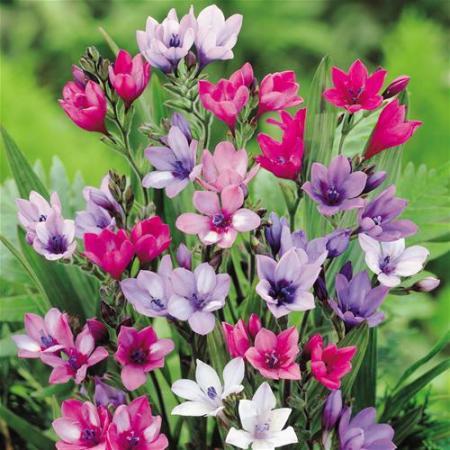
Highlight the following types Babians:
- Babiana plicata - this variety does not reach more than 20 centimeters. Its leaves are hairy and rise up to an inflorescence whose tip resembles a peak. Folded Babiana can be pale blue or purple. There is also a white folded Babiana, whose flowers have yellow and purple spots. The smell of folded Babiana is reminiscent of cloves. This species blooms only in spring.
- Red - blue Babiana (Babiana rubrocyanea) - the growth of this species, like the folded one, does not exceed 20 centimeters. Blooms at the end of winter. It has thin, hairy leaves with protruding veins. The color of the flower is purple-blue, changing closer to the center to red.
- Protruding Babiana (Babiana stricata) - unlike the previous two species, protruding Babiana reaches 25 centimeters in height, and grows in a short time. But the plant itself is rather untidy, having hairy leaves on which veins protrude, and inflorescences branched with cup-shaped flowers. The flowers are blue, white and purple. Sometimes you come across a protruding babiana with cream colored flowers.
What you need to know about care
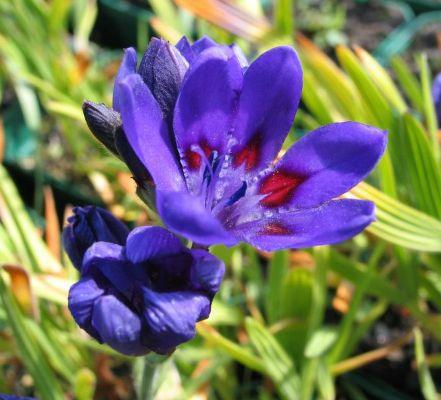
In general, the plant does not require special conditions for planting and care. But there are also mandatory aspects, failure to comply with which will lead to his death:
- How choose the right place. Due to her African origin, Babiana is very fond of bright light, which means that the pot with it should be placed near the window. But, at the same time, we should not forget that it is very afraid of frost. Therefore, the window should be insulated, or a flower should be placed on it only in the summer. Desirable window exit to the west or east.Separately, it is worth saying that the pot for Babiana should be narrow and deep. There should be a hole at the bottom. To fill it, you need a universal soil mixture used for indoor plants. Considering the plant’s preferences for breathability and moisture capacity, you can add a little sand to the composition.
- What temperature is needed? The ideal temperature for Babiana is considered to be from 22 to 28 degrees.
- How to water correctly? Immediately after planting, Babiana requires a large amount of water. Dry air has a detrimental effect on the flower, so it is necessary to spray its leaves every other day. Thereby maintaining moisture for it. It will not be superfluous to alternate spraying with watering. In the summer, watering alone will not be enough, and the only measure will be to immerse the flower pot in a container of water. The plant will absorb as much water as it needs.
- How to fertilize? In order for the plant to delight you with its beauty, it needs to be fertilized periodically. Once a month this should be done with the help of mineral fertilizers, which must contain fluorine and potassium. Sometimes it doesn’t hurt to alternate mineral fertilizers with organic ones.
- Do you need a transplant? The plant requires replanting regularly. In cases where the pot becomes cramped, a larger container is selected. If the size of the flower does not change, then simply updating the contents of the pot is enough.
- How does it reproduce? Reproduction occurs thanks to the tubers of the plant. When they form, they must be separated from the plant, dried and stored until spring.
There is still the possibility of propagation by seeds, but this process takes a lot of time and requires a lot more hassle.
Babiana pests
Babiana is susceptible constant pest attacks. This can be recognized by the spots on the plant and the presence of cobwebs on the stems.
Pests include:
- Spiders
- Aphid
- Spider mite
- mealybug
- Nematode
In addition to insects, diseases (for example, gladiolus trip, root rash) pose a danger to the plant. As well as excessive/insufficient watering and low air temperature in the room. This can be understood by changes in the appearance of the leaves and stem.
Video rating of the most beautiful indoor flowers:
Interesting information about the vegetable garden

